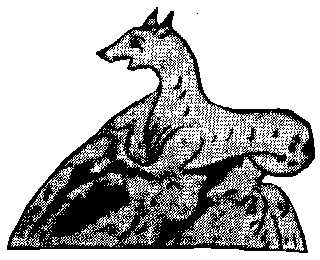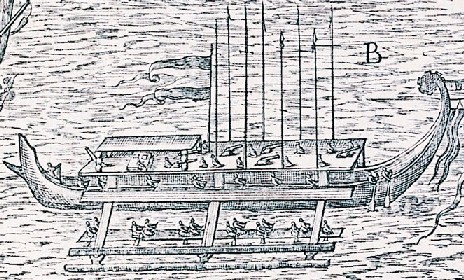To next page

----------------------------------------------------------
In this book: The Wonders of India, 45 of the about 130 stories are connected to India or Ceylon (Serendib), China: 14, Zabay + Lamira (Indonesia):11, Waqwaq:7, The gold bearing country: 7 , Zindjs:12, Ethiopia (Habashi):1 (Many others are connected to Arab places)
We can conclude that travel to East Africa must have been frequent out of Siraf were Buzurg collected these tales.
The geographical places in Africa that are mentioned are: Zindjs:3, Sofala of the Zindjs:4, Sofala:1, Land of the Zindjs:4, Highlands of Zindjs:1, Sea of Zindjs:1, Kabila/Qanbalu/Qabila:3, Thabia:1, Island of Ghileni:1, Sea of Safou:1, Sea of Berita (Berbera):1, Berita:1, Zeila:1, Abyssinia:1. Sea of Habash:1, Cairo:1, Nile:1, Assouan:1.
We can conclude that the lands of Zindj and Sofala are the only places in East Africa that were often reached from Siraf.
When reading the book one notices that the gold trade of Sofala doesn't get mentioned. Most probably because no specialized gold trading centers had come into existence yet, (Kilwa and Sofala town). The gold bearing countries are often mentioned, but they are Malaysia and the interior of India. The gold digging in the country of Zindjs is mentioned but includes mythical creatures, pointing to the fact that no first hand knowledge is available.
In every edition that I consulted the numbers for the tales were different, because they let out here and there a story. My numbers as a result are a kind of compromise between the different editions.
-----------------------------------------------------------------------------------------------------------
Note on tale 36
-------------------
Gold mining in the Zimbabwe area started from the ninth century, (according to archeological evidence.) So there the story might be correct.
Where the gold digging ants, big as cats are mentioned, we have to do with a much older tradition, started in the Hindu epic "Mahabharata"(Sanskrit) from 1000 BC. The ants are first mentioned in the west by Herodotus (430 BC) after him Neachus (4th century BC ) and Megasthenes (3th century BC) Then Nearchus, Agatharchides, Strabo. In the second century AD Philostratos and Solinus put the ants in Ethiopia as well as India.
The 6th century Christian Topography also includes an ant. By now it has grown into an ant-lion.
---------------------
On top: Sculptures of outrigger boats capable of crossing the ocean are found at Borobodur
Under: Outrigger canoe as the Malaysian people used in the days that intercontinental travel was over.
Taken from : India Orientalis.-Part IV. [by] Bry, Johann Theodor de , et al. 1600 (based on then about 30 year old travel accounts).
